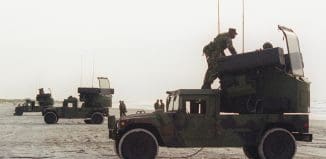ISIS Acquired Substantial Armaments Through Looting
This post is also available in:  עברית (Hebrew)
עברית (Hebrew)
A new Amnesty International report details how inadequate regulation of the flow of armaments and poor handling of the situation on the ground during the Iraq war and after it has led to ISIS acquiring weapons, ammunition, and equipment looted from the Iraqi army.
‘Taking Stock: The arming of the IS’ combines thousands of images, videos, as well as expert analysis to paint a grim picture of a well armed ISIS, in possession of armaments designed and manufactured by China, EU states, Russia, and the United States.
“The vast and varied weaponry being used by the armed group calling itself Islamic State is a textbook case of how reckless arms trading fuels atrocities on a massive scale,” said in the report Patrick Wilcken, Researcher on Arms Control, Security Trade and Human Rights at Amnesty International. “Poor regulation and lack of oversight of the immense arms flows into Iraq going back decades have given IS and other armed groups a bonanza of unprecedented access to firepower.”
ISIS gained a major part of its weaponry after taking Mosul in June 2014, and looting the stockpiles of the retreating army. A large portion of the arms come from Russia and the former Soviet bloc countries, as well as the US, but ISIS is now in possession of weaponry from at least 25 different countries.
Some of the weaponry ISIS holds is quite advanced, including man-portable air defence systems (MANPADS), guided anti-tank missiles and armoured fighting vehicles, as well as large stocks of assault rifles, handguns, machine guns and more.
“This shows again that arms export risk assessments and mitigation measures to unstable regions require a long term, root-and-branch analysis. This must include assessing if military and security units are capable of effectively controlling stockpiles and abide by international human rights and humanitarian standards,” said Wilcken.






























